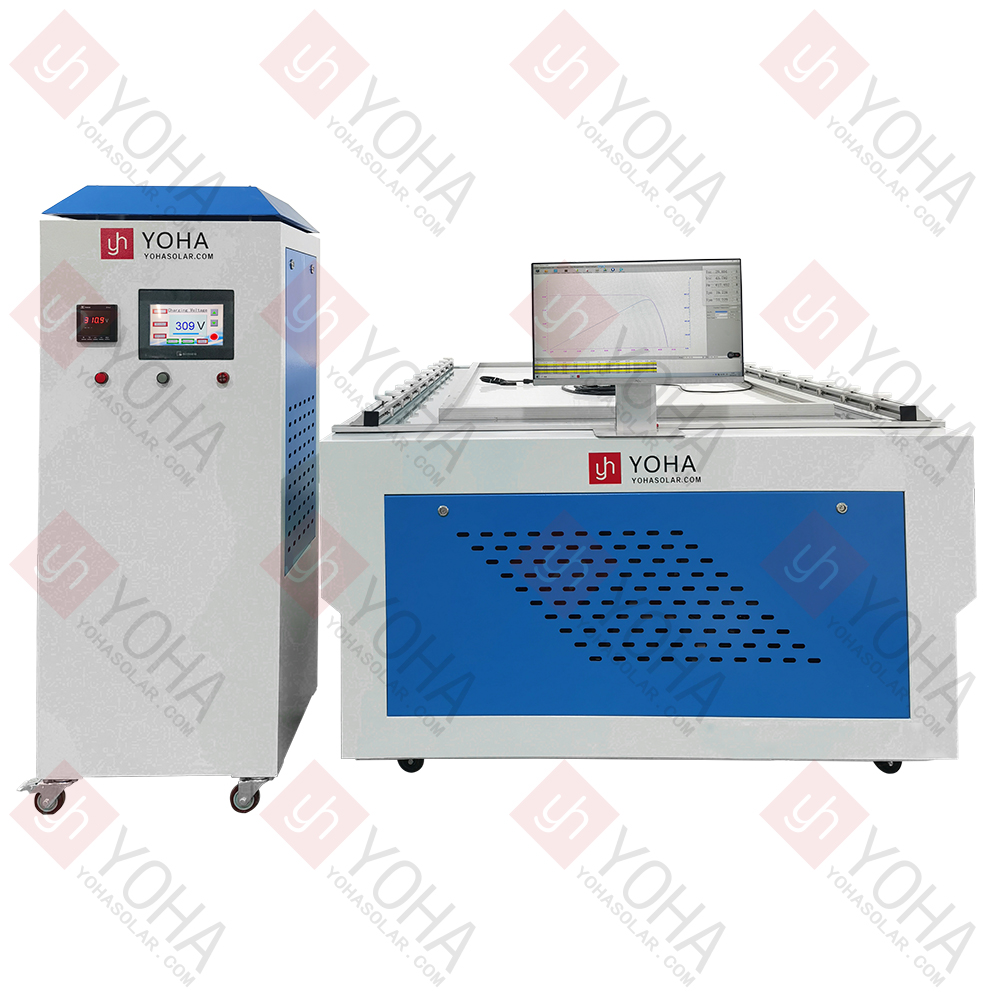Welcome to Wuhan Yoha Solar Technology Co., Ltd!
common problem
Site Map
Language:
 Chinese
Chinese
 English
English
Welcome to Wuhan Yoha Solar Technology Co., Ltd!
common problem
Site Map
Language:
 Chinese
Chinese
 English
English
A Solar Module IV Tester is a key professional inspection device used to rapidly and accurately measure and plot the current-voltage (IV) characteristic curve of photovoltaic (solar) modules by simulating solar irradiance under Standard Test Conditions (STC). It comprehensively analyzes core performance parameters such as open-circuit voltage, short-circuit current, maximum power point, fill factor, and conversion efficiency. This enables the evaluation of module power output capability, detection of potential defects, quality binning, and verification of product specification compliance.

High-Speed and Precise Measurement: Utilizes advanced electronic load and control systems to complete a full IV curve scan within seconds, providing high-precision current, voltage, and power data. Meets the requirements for high efficiency and throughput on production lines while ensuring the reliability of test results.
Comprehensive Parameter Analysis: Measures not only basic parameters like open-circuit voltage (Voc) and short-circuit current (Isc), but also accurately calculates and reports key performance indicators such as maximum power point (Pmax), voltage at maximum power (Vmp), current at maximum power (Imp), fill factor (FF), and conversion efficiency (η). Provides comprehensive data support for module performance evaluation and quality binning.
Compliance with Standards and Automation Integration: Strictly adheres to international/domestic photovoltaic testing standards such as the IEC 60904 series, ensuring standardized test conditions and comparable results. Equipped with rich communication interfaces for easy integration into automated production lines or laboratory information management systems. Enables automated testing processes, real-time data upload, and traceability management, enhancing overall quality inspection efficiency.
Stable, Reliable, and Intelligent Diagnostics: Employs high-quality components and robust design to ensure long-term stable operation in industrial environments. Some high-end models feature intelligent analysis capabilities, enabling potential defect warnings based on abnormal IV curve shapes (such as steps, burrs, slope changes, etc.). Assists in quickly locating issues (e.g., micro-cracks, hot spots, poor soldering, PID effect), thereby improving quality control levels.
| Item | Parameter |
|---|---|
| Model | YHMT-A+A+A+ |
| Light Source | Meets IEC 60904-9:2020 Spectral Requirements (Class A+) |
| Spectral Range | 300~1200nm |
| Irradiance | 1000W/㎡ (200~1200W/㎡) |
| Irradiance Non-uniformity | ≤1% (A+) |
| Irradiance Instability | ≤0.5% (A+) |
| Test Result Consistency | ≤0.5% |
| Electrical Measurement Error | ≤1% |
| Single Flash Pulse Width | 10~100ms |
| Effective Test Area | 2600*1500mm |
| Power Supply | 220V/50HZ |
| Equipment Dimensions | 2900×1770×1065mm |
1、 Strictly Adhere to Light Source Safety Protocols: The equipment emits high-energy, extremely bright light pulses. Strictly prohibit looking directly at the light source or opening the test chamber door during testing.
2、 Ensure Proper Grounding and Electrical Isolation: The equipment involves high voltage and large current output. It must be reliably grounded, the power supply must meet specifications, and cable insulation must be checked regularly.
3、 Precisely Control Test Environment Temperature and Humidity: Module performance is significantly affected by temperature. Before testing, modules must be sufficiently preheated/precooled to the set temperature (typically 25℃±1℃), with real-time precise monitoring of the module surface temperature (using calibrated contact sensors). Environmental humidity must be controlled within the specified range (typically <60% RH) to prevent condensation or high-voltage discharge risks.
4、 Correct Use of Test Fixtures: Clean test fixtures regularly to prevent oxidation and avoid poor contact leading to measurement errors or local overheating damaging the module.
5、 Regular Calibration and Maintenance of Core Components: Light source intensity (irradiance uniformity, stability), current/voltage sensor accuracy, and temperature probes are core metrology units. They must be calibrated regularly according to standards (e.g., IEC 60904 series). Simultaneously, maintain optical components (clean lenses/reflectors) and mechanical movement mechanisms to ensure stable and reliable equipment status.
6、 Follow Standard Operating Procedures and Parameter Settings: Accurately input module parameters (e.g., nominal power, type) before testing. Carefully set pulse width and intensity to avoid long/strong pulses causing irreversible thermal damage to modules (especially thin or temperature-sensitive materials). Allow modules to cool sufficiently after testing before the next test or removal. When handling abnormal data, investigate factors like environment, contact, and equipment status; strictly prohibit arbitrarily altering or ignoring abnormal results.
TOP
18086473422
MESSAGE
